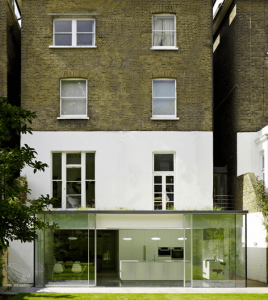We are an architectural firm that provides its clients with an impressive list of services. Our goal is to ensure we can meet all sorts of different requirements to satisfy everyone. For example, one client could be a private individual that wants a new home. Another may represent a commercial business and want to update their office space. Whatever the case, we will give you the benefit of working with the leading architects London has.
 You can describe building materials as any that you utilise for construction. As the years have gone by, we have made use of a multitude of these products to make superior structures. In terms of choosing the optimum building material for each situation, it all comes down to their ability to overcome issues. Cost efficiency is also significant.
You can describe building materials as any that you utilise for construction. As the years have gone by, we have made use of a multitude of these products to make superior structures. In terms of choosing the optimum building material for each situation, it all comes down to their ability to overcome issues. Cost efficiency is also significant.
To simplify everything here, we broadly categorise the materials into natural and man-made ones. The first are those we find in nature that are ready for use. Man-made ones require preparation for specific jobs. What we want to do in this post is go over some of the resources we use today. We will look specifically at fabric, puzzolana, and ceramics.
Fabrics
Firstly, we have fabric, a natural material. Over many thousands of years, the tent has been the choice of home to groups from around the world. In history, hemp and cotton were predominant as materials for various tents, yurts, and more. In addition, contemporary developments mean there are not lots of options for synthetic fabrics and tensile architecture.
Today’s fabric structures are reliable and strong. You can even see the materials in cladding, roof covers, and even things like soundforms.
Puzzolana
Another natural material would be puzzolana. This word originated from Puzzouli, an Italian town. The volcanic dust found around it merged together with the hydrated lime that was found to hold hydraulic attributes. Ever since, puzzolana has been a material that is a common choice for construction.
Before we had cement, people would mix puzzolana with lime to generate concrete. These days, its main use is replacing a quantity of cement when creating concrete.
Ceramics
Finally, we will talk about ceramic, which are man-made. Interior decorative substances like fixtures and tiles belong to this group. Prominent applications include floors, counter-tops, and even fall-ceilings.
Ceramics are noteworthy for being lightweight. Their extreme hardness is also a major benefit. Plus you have a very wide array of products to choose from to suit a variety of needs.
Selecting materials with the top architects in London
At Coffey Architects, we help to create the most stunning pieces of architecture imaginable. To do so, we work with various materials. This includes brick and metal, as well as many others. We are always creative here and look for the very best option for each project.
It is important to think about the location too. Often it can be a good idea to be sympathetic to what is common in an area. For example, you would not want a new glass monolith in an old part of a city that is mainly traditional brick or stucco.
So, if you would like to work with the foremost architects London has, please speak to us. We would love to explore materials with you to select the best ones.
